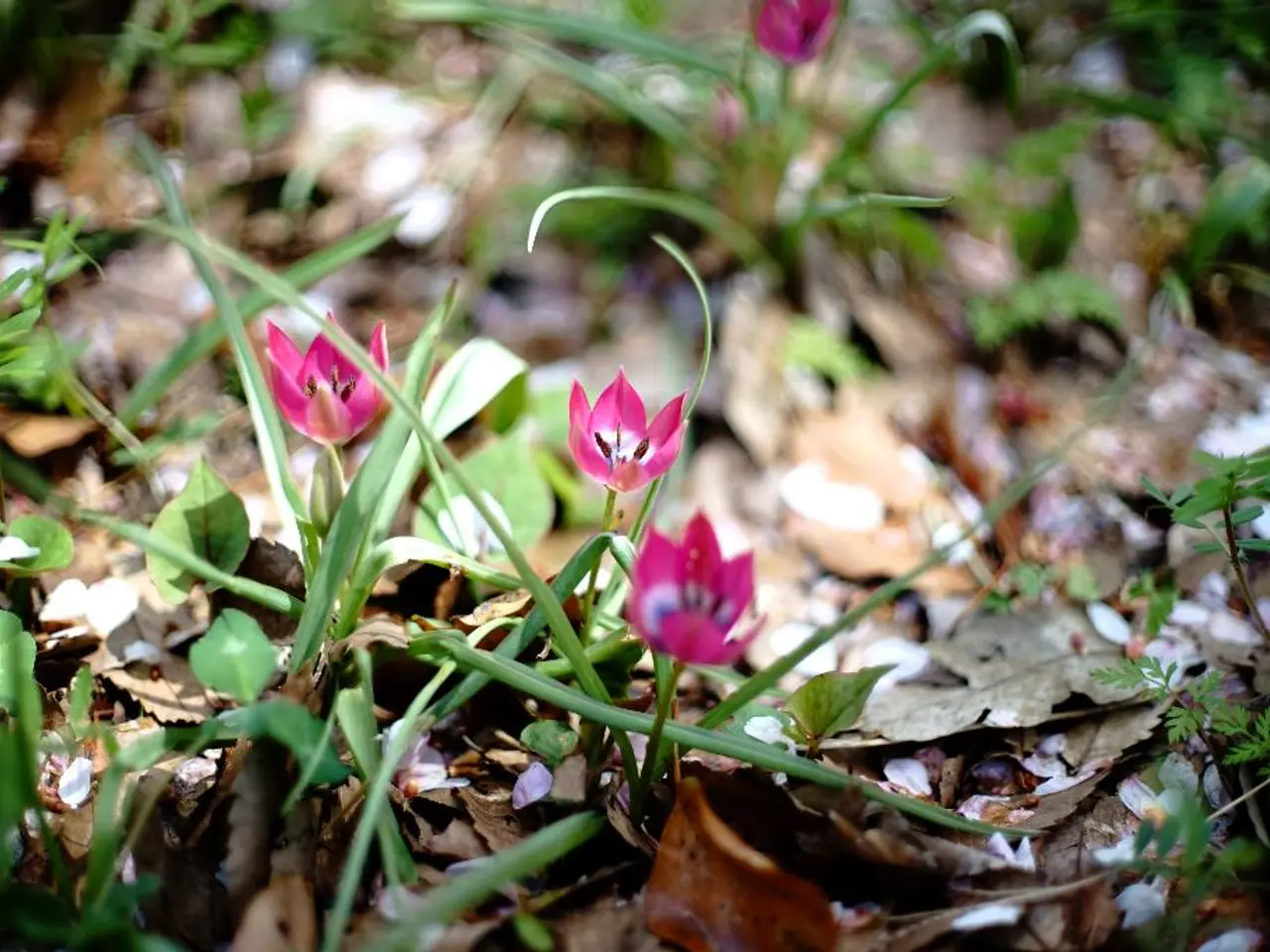Thriving Business Prospects for Indian Farmers through Dried Flower Sales
==========================================================================================
In the vibrant landscapes of India, a new farming trend is blooming – dried flower farming. This innovative approach, known as shushk pushp in local terms, is gaining popularity for its natural charm, longevity, and potential to transform the lives of small and marginal farmers.
Dried flowers are finding their way into various industries, including home decor, greeting cards, wall frames, potpourri, bouquets, gift packaging, fashion, and cosmetics. India's exports of dried flowers reach countries like Germany, USA, Japan, and the Netherlands, positioning India among the top three global exporters of dried flowers.
The market potential for dried flowers is significant, with an estimated annual export value of around Rs 100 crore. The demand is high in the US, Europe, Japan, and the Middle East, offering a lucrative opportunity for Indian farmers.
Production methods for dried flowers are eco-friendly and efficient. Solar drying techniques, which preserve flowers hygienically without chemicals or electricity, are becoming increasingly popular. These off-grid solar dryers are low-cost and scalable, making them ideal for smallholder farmers seeking to add value while reducing post-harvest losses.
Common dried flowers suited to Indian agro-climatic conditions include butterfly pea, chamomile, tulsi, lavender, and hibiscus. Government schemes, NGOs, and local initiatives are facilitating farmer training on solar drying technology, nursery management, and value-addition processes.
Training and resources are crucial for positioning Indian dried flowers as premium products in global markets. Policy support, quality certifications, and skill development programs are key to unlocking the full potential of this industry.
Dried flower farming offers several benefits. It requires minimal water, making it suitable for regions with water scarcity. The indoor processing work involved also makes it suitable for women and elderly members of the household. Pest attacks are rare, reducing the need for chemical inputs.
Moreover, dried flowers can last for years without losing their appeal, unlike fresh flowers which wilt within days. This longer shelf life and easier storage and transportation make dried flowers a more resilient and less wasteful option.
The value addition to dried flowers increases their appeal and market value. Domestically, the demand for dried flowers is rising in urban areas, where consumers appreciate handcrafted, sustainable products. The global market for dried flowers is also growing steadily, as people shift toward eco-friendly alternatives to plastic decorations.
Farmers in India can grow flowers suited for drying with basic equipment and traditional techniques, requiring little land, minimal water, and no expensive inputs. Training and support from agricultural universities, KVKs (Krishi Vigyan Kendras), and NGOs can help farmers upgrade their skills and quality in dried flower production.
The dried flower business provides jobs, promotes entrepreneurship, and increases rural incomes, especially for small and marginal farmers, especially women who can do most of the work from home. As this industry continues to bloom, it promises to bring a fresh perspective to agriculture in India.
- As the dried flower market expands globally, it presents a promising avenue for business in sectors like fashion and cosmetics, as dried flowers are increasingly used in these industries.
- For those seeking to improve their knowledge and skills, education and self-development opportunities are available in the form of training programs focusing on solar drying technology, nursery management, and value-addition processes for dried flowers.
- Home-and-garden enthusiasts can find unique and durable décor items from dried flowers, given their longevity and natural charm, making them a perfect fit for eco-conscious lifestyles.




